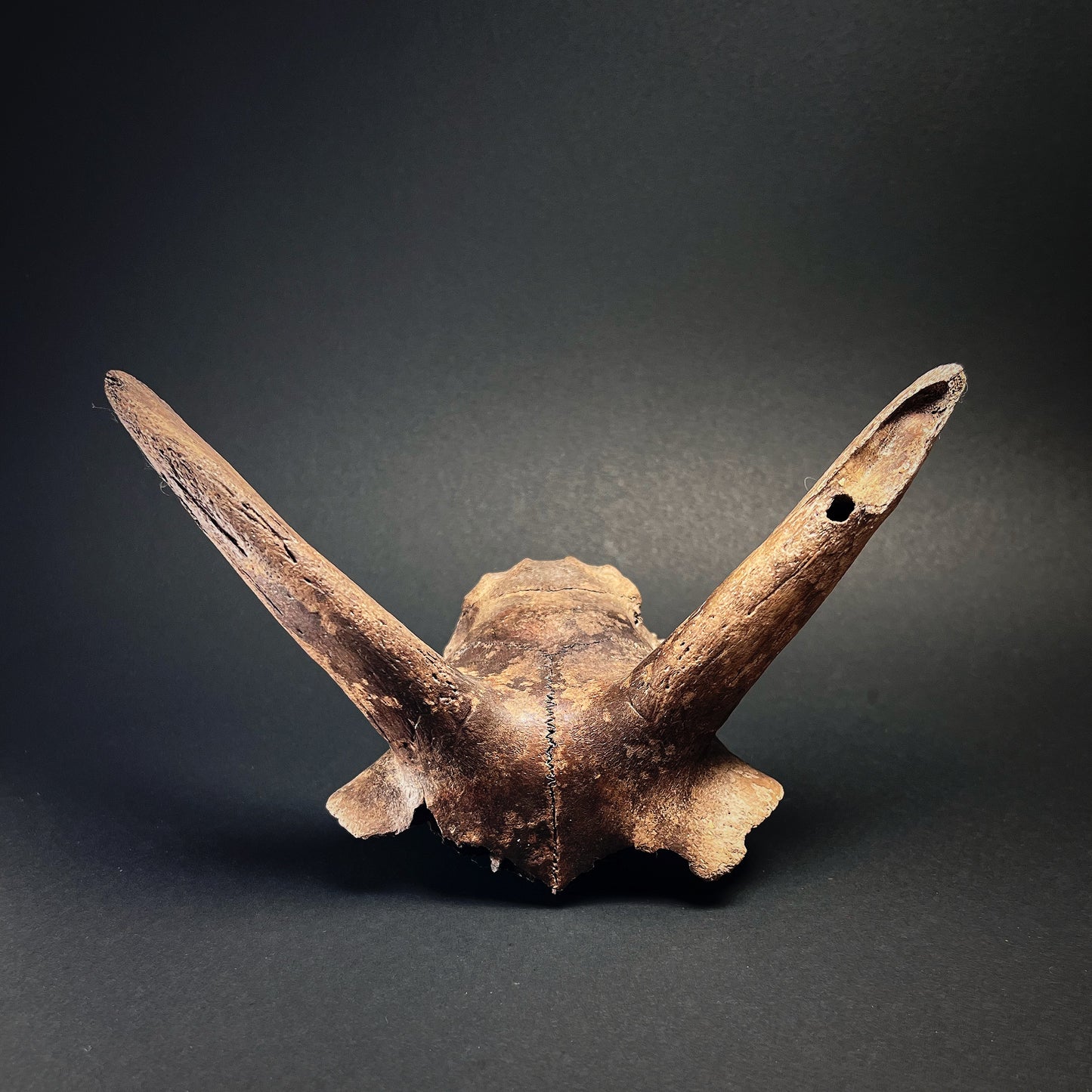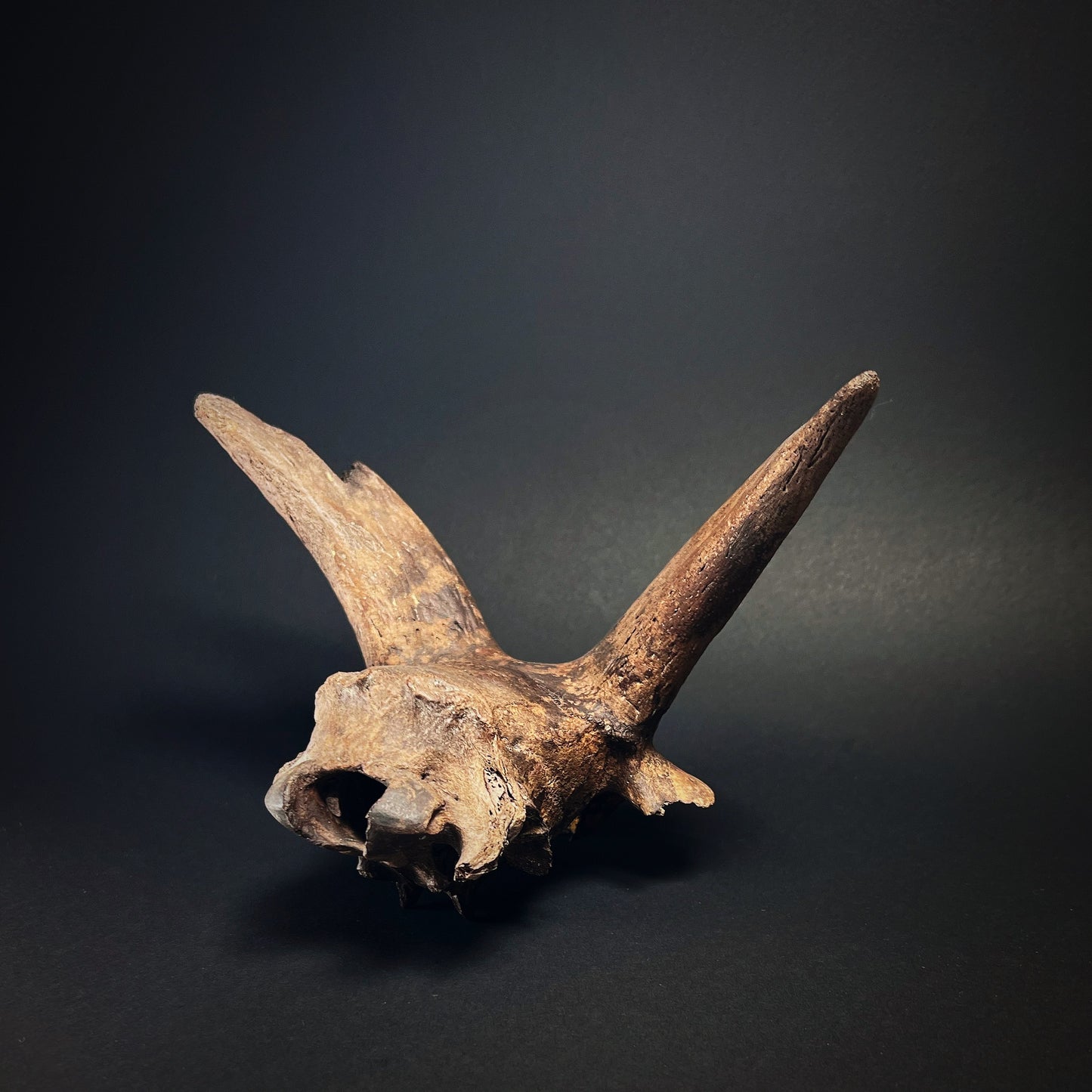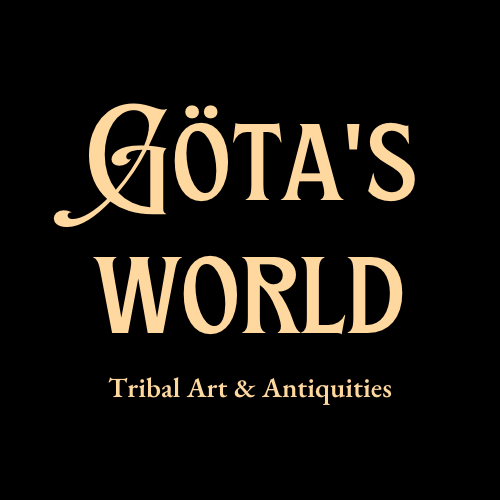Danish Late Mesolithic or Early Neolithic Period Goat Skull Fragment
Danish Late Mesolithic or Early Neolithic Period Goat Skull Fragment
Couldn't load pickup availability
Ertebølle Culture, c. 5400–3950 BC or Funnelbeaker Culture, c. 4100–2800 BC, Denmark
A fascinating and rare peat bog-found artifact, this goat (Capra hircus) skull fragment offers a unique glimpse into prehistoric life in Denmark during the late Mesolithic or early Neolithic period. The fragment, likely the frontlet of the skull, displays distinctive cut marks made by flint tools, a testament to the advanced craftsmanship of early humans in this region.
The Ertebølle culture (c. 5400–3950 BC) flourished around the Limfjord in northern Jutland, where its people settled on headlands, beaches, and islands, living primarily through fishing, hunting, and gathering. The Ertebølle culture is known for its impressive shell heaps—kitchen middens—which largely consist of oyster shells from the abundant beds in the local fjords and straits. These hunters were also skilled in inland water travel, using dugout canoes to navigate the waterways.
Flint tools, including axes, knives, scrapers, and arrowheads, were essential to the Ertebølle people, who had developed a unified and high standard of flint-working. In addition to flint, they used tools made from wood, bone, and antler. Pottery was also produced, using locally-sourced clay tempered with sand, crushed stone, and organic material. These early ceramic vessels were coiled and fired in open fires or bonfire kilns.
This fragment of goat skull provides a rare direct connection to the Ertebølle culture, whose burial practices included cremation and placing objects in graves. The Funnelbeaker culture (c. 4100–2800 BC) later replaced the Ertebølle, marking the advent of agriculture and animal husbandry in Denmark, although hunting and fishing practices remained vital. Domestic animals such as pigs, cattle, sheep, and goats began to appear in the landscape, which also saw the construction of longhouses and megalithic tombs like dolmens and passage graves.
This rare artifact offers a poignant reminder of the evolving cultures in Denmark as they transitioned from hunting and gathering to more settled agricultural practices.
Good condition. Age-related wear, chip and fractures. Traces of peat bog. Lovely deep dark brown, almost black patina. Fragment is treated with a surface-protecting beeswax layer. Size approx. 19,5cm x 10.8cm x 15,5cm.
Provenance: Danish private collection.
References and further reading:
Europe's First Farmers – T. Douglas Price, University of Wisconsin, Madison, Cambridge University Press, 2000 (http://assets.cambridge.org/97805216/62031/ sample/9780521662031ws.pdf)
Inland Ertebølle Culture: the importance of aquatic resources and the freshwater reservoir effect in radiocarbon dates from pottery food crusts, Bente Philippsen & John Meadows, Internet Archaeology (doi:10.11141/ia.37.9)
The introduction of ceramics in the Ertebølle Culture, Karen Poulsen, Danish Journal of Archaeology, 2013 2, 146–163. (https://doi.org/10.1080/21662282.2013.904127)
Organic residue analysis of Early Neolithic ‘bog pots’ from Denmark demonstrates the processing of wild and domestic foodstuffs, Harry K. Robson, Hayley Saul, Valerie J. Steele, John Meadows, Poul Otto Nielsen, Anders Fischer, Carl P. Heron & Oliver E. Craig, Journal of Archaeological Science: Reports, Volume 36, 2021. (https://doi.org/10.1016/j.jasrep.2021.102829.)


-
Shipping
The shipment will be prepared in the course of 3-5 days and dispatched via Posti Group Oyj or purchased item(s) can be picked up from our shop during the store's opening hours (Tarkk’ampujankatu 4, 00140, Helsinki, Finland). Within the Finland, all items are shipped via Posti Group Oyj unless otherwise requested. We pack the items carefully and mainly in recycled materials because we want to save nature. You will receive the tracking number for your items by e-mail.
-
Returns
Returns and exchange will be accepted within fourteen days (14) of receipt at the purchaser’s cost to include freight and packaging. Items must be returned in the same condition as when they were shipped, and will not be accepted if damaged or altered in any way. Please inform us via email (info@gotanmaailma.fi) or by calling +358408408352 before sending. We do not accept returns more than 14 days after delivery.


